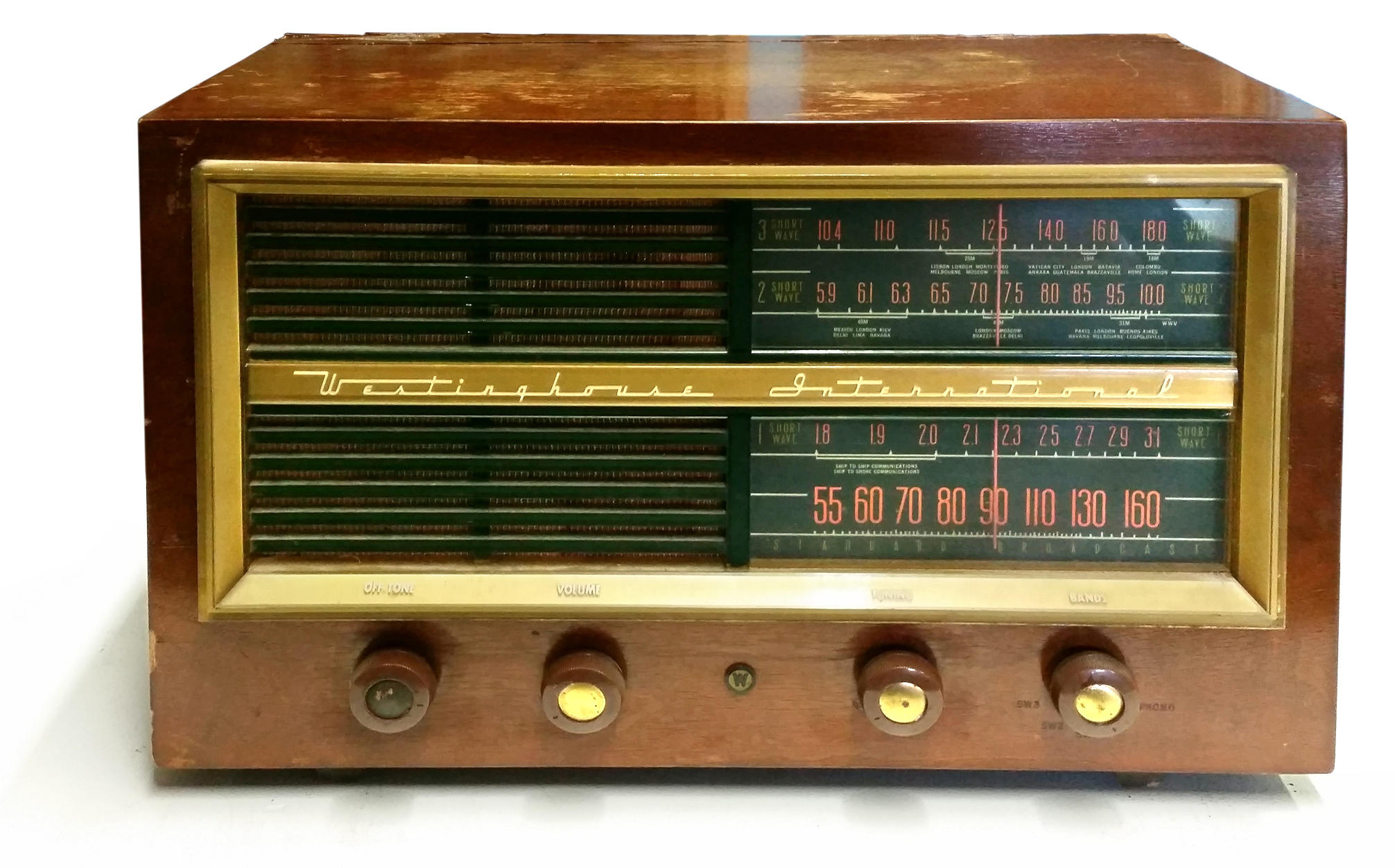
Steve Mann (bio), Stephanie Mann, and others who may wish to join this effort.
Date: 2015 December 2, at 6pm
Abstract:
Artificial Intelligence (AI) and the Internet of Things That Think
(IoT and TTT), is doing more than making people stupid. It specifically negatively targets
People That Think, and is a direct assault on two important values:
(1) the scientific method (reproducability of results); and
(2) emergency preparedness (ability to improvise, .e.g to save lives,
in case of emergency situations).
Go back to the days before A.I. and take a look at your grandparents' radio:

What's was most remarkable about it was what was "behind the scenes".
Take a look at the back. It was probably easily removable, or, more often than
not, maybe it didn't even have a back. It was completely OPEN!:

Stapled or glued to the inside panel, there was often a schematic diagram:

(Schematic diagram on inside panel of a Westinghouse 1951 model 6-T-104 radio)
This "skeleton" outline laid bare all the secrets of the radio's inner workings. To get it, you didn't have to do anything special like become a developer. It was there for everyone to see.
Whereas the vacuum tubes were transparent, perhaps by chance, the important thing here is that the manufacturer expended extra special effort toward transparency by including this schematic diagram.
Fast forward about 20 years.
Now take a look a modern (C. 1974) "smart" device like a microwave Doppler
radar motion detector. It has an antenna hidden behind a plastic face plate
somewhat disguised to look like an ordinary speaker grille.
Suppose we wish to know how this thing works, and how well it can or cannot
see us and violate our privacy or health or wellbeing.
Looking inside, what do we find but a bunch of computer chips with the numbers deliberately defaced and ground off:

Here the manufacturer expended extra effort to make it harder to understand or repair their product ---- the exact opposite of the past where manufacturers were on the side of the public.
We're increasingly thrust in a world where stupidity and insanity are not only assumed, but actually mandated == a world we're not only discouraged from thinking and understanding, but where we're actually forbidden from thinking and understanding. Such a world is fraught with two major problems:
And amid the above-mentioned
deliberate secrecy and obfuscation, we're expected to reveal more and
more about ourselves, to governments and organizations that are increasingly secret.
Indeed, we're increasingly subject to surveillance while being forbidden from watching:


This hypocrisy is creating a world of half-truth where human lives are at risk yet (some of) these humans are not allowed to see and understand the risk they face. The whole truth requires that we can see things from both sides, not just one side.
Accordingly, we will present a number of concepts starting with POVAR
(Persistence-Of-Vision Augmented Reality) by way of the Sequential Wave Imprinting Machine.
This device, when waved in front of the above-mentioned
microwave Doppler radar motion detector, allows us to see the radio waves emenating
from the antenna hidden behind its plastic face plate:

S.W.I.M.wear: A wearable (wristworn) version of the S.W.I.M.

Stephanie Mann (Age 9) built a robotic S.W.I.M. POVAR racetrack